A few weeks ago I met a writer named Alex who loves pop culture like I do. When she told me she writes a newsletter called ‘Rodeo Break,’ I was instantly curious.
“It’s based on an actual thing in Arizona called Rodeo Break,” Alex told me. “I’ve never been to Arizona or to a rodeo, but I liked the name.”
I have been to Arizona – and to a rodeo – but I’d never heard of a Rodeo Break.
I immediately went digging and found out, yes, ‘Rodeo Break’ IS a real thing.
In fact, the first search result I found was for a school calendar, and there it was in February – two days when school was closed for ‘Rodeo Break.’
But where did Rodeo Break come from?
I was curious…
Like so many ideas, the Rodeo Break was created to solve a problem…
Though Tucson, Arizona has over a million residents today, back in 1924 it was a frontier town, with around 30,000 residents.
And the days of the Wild West weren’t that far behind it.
Arizona had only been a state since 1912. The Grand Canyon had only become a national park (the country’s 17th) in 1919. And Route 66 wasn’t even completed yet.
It was at this time that Frederick Leighton Kramer, President of the Arizona Polo Association, gathered a group of local businessmen to discuss a way of celebrating Tucson’s heritage – and attracting visitors to the area during the winter.
He suggested they have a three-day festival — with a rodeo and a parade.
At that time, many ranches and private schools in the area had rodeos, so some of the residents thought Kramer’s festival was unnecessary.
But he convinced enough people that there was merit to his idea, and plans were made for the inaugural ‘La Fiesta de los Vaqueros’ (The Party of the Cowboys) in February 1925.
City leaders and The University of Arizona agreed the Festival would be treated as a holiday, closing schools and many local businesses, so residents could take part in the events.
This was the first ‘Rodeo Break.’
The inaugural Fiesta de los Vaqueros was held during the time of prohibition – so in the weeks leading up to the event, federal officials began cleaning up the city.
The Arizona Daily Star reported that ‘25 stills were captured’ and an ‘estimated 3000 gallons of moonshine were destroyed.’
The headline in the Arizona Daily Star promoting the Festival read:
“Cowboys are asked not to shoot up the town”
The Festival’s Rodeo featured four events – steer wrestling, steer typing, calf roping, and saddle bronc riding. They also had special events, including a wild horse race, and the chance to see a ‘lady bronc rider’ named Tad Lucas (a future ProRodeo Hall of Fame member, who was still riding in her 60s).
In addition to the Rodeo, the Festival included an evening Rodeo Dance (attended by ‘tourists, cowboys, cowgirls, local society members, and Navajo Indians’) and a Rodeo Parade the following morning.
The first Rodeo Parade showcased 300 people, including ranchers or horseback, mounted polo players in uniform, and the 10th Cavalry and 25th Infantry bands. Thousands of spectators filled the streets to watch the parade.
While the Rodeo participants competed for a purse of $6650, the parade also had prizes.
There were merchandise and cash prizes, including $15 for the ‘most typical’ cowboy and cowgirl costume, and a 100-pound sack of potatoes for the ‘most comical costume.’
The oldest man on horseback won a box of cigars, while the fattest horse in the parade received a ‘big cactus’ ham (I cannot confirm what that was - if you know, please tell me!).
And Tucson’s inaugural Fiesta de los Vaqueros was a success.
The Festival attracted visitors to Tucson in 1925 as Kramer had hoped, and the visitor numbers (and the Festival) grew over the following years.
Seven years after the first Festival, the Rodeo moved to a bigger location with 3000 seats, and later to an arena at the Tucson Rodeo Grounds that could seat 11,000 spectators.
And 97 years later, the Fiesta de los Vaqueros and the Rodeo Break continue…
The Tucson Rodeo now includes cowboys and cowgirls testing their ranching skills in six performances. The eight-day event is one of the top 25 professional rodeo events in North America, and the first major outdoor event on the Professional Rodeo Cowboys Association schedule.
The Rodeo Parade, with its horse-drawn coaches, outfitted riders, folk dancers and marching bands, is now ranked as the world’s longest non-motorized parade.
In recent years, the parade has included 200 floats and been watched by an estimated 200,000 spectators. (Or 150 floats and 150,000 spectators, depending on your sources).
But what is the Tucson Rodeo really like?
To find out, I spoke to Martta Eicher Rabago, a former Tucson resident who shared her fond memories of the Tucson Rodeo (and the school break that came with it) from the late 1970s to the early 1990s.
Martta told me that while there were other small rodeos and events at the county and state level, the Fiesta de Los Vaqueros or Tucson Rodeo was a significant event – and a significant part of their springtime activities.
“Many school bands marched in it. I marched in it, too. Generations of families would ride on hay wagons, in horse-drawn buggies or stagecoaches, or on horseback. There were also brightly decorated floats and Folklorico dancers with Mariachis performing.”
“My favorite was watching the vaqueros, Mexican cowboys dressed in their finest bolero jackets and sashes, with silver conchos on their pants and belts. Oh, and silver spurs on their boots.”
“My childhood and teen years are filled with memories of the rodeo.”
Sally Bland Boice, who grew up in Tucson in the 1950s and 60s, echoed Martta’s sentiments.
“The rodeo was part of the culture,” she said. “It was quite the tradition when we were kids.”
“Girls were allowed to wear long pants to school the three days before the festival. Of course, that was ‘back in the day’ when dress codes required girls to wear skirts and dresses. And most of the grade school boys wore holsters with play guns in them.”
“School was out Thursday and Friday, so everyone could go to the downtown parade on Thursday and to the rodeo, which continued through the weekend. High schools all had ‘Rodeo Queens’ who were also shown off during the parade,” Sally told me.
“We all probably loved it because we got to miss a few days of school.”
But what about now?
Over the years, some have questioned if the Rodeo Break is still necessary.
As Martta told me:
“For Tucsonans that are loyal to the community they still attend.
But the town has grown so much that outsiders don’t understand the significance.”
But judging by the Visit Tucson website, the city has big plans for this year’s Festival.
And the Rodeo Break lives on – with schools in Tucson closing for two days next week to coincide with the Festival.
From February 19-27, Tucson will give residents and visitors a chance to celebrate the heritage of the area – just as they’ve done for nearly 100 years.
(And I’m sure the kids don’t mind the break from school, either.)
FUN FACT: The Tucson Rodeo has been featured on TV – including ABC’s Wide World of Sports in 1962 and ESPN throughout the 1990s. Hollywood has also used the Tucson Rodeo as a filming location for several films over the decades (from 1954’s The Lusty Men, starring Robert Mitchum, to the 1994 film 8 Seconds, starring Luke Perry).
**Many thanks to Martta, Sally, my friend Brian and my uncle Frank who helped me gather insight on this story.
And of course, thank you Alex, for introducing me to the Rodeo Break and sending me down the curiosity rabbit hole!
Recent Work and Writing
Janet Jackson Is Not The Woman Who Flashed Her Boob at the Super Bowl — Here’s what I want people to know about her.
Why is Communication So Important? — I joined Jeff Hunt on the Human Capital Goal Span podcast to talk about how communication can help you increase sales, build trust, solve problems, and improve performance.
Racist, Sexist, or Just Clueless? — An exec from BNP Paribas was accused of bullying and making racist remarks to his colleagues. But his apology may make things worse.
Taylor Swift Deserved a Better Apology — Haven’t people learned not to mess with Taylor by now? Here are three reasons why an apology she received hit all the wrong notes.
How Can I Help?
How much does communication matter?
Well, I just read that people may not take Storm Eunice seriously because of its name.
Though the names assigned to storms have nothing to do with their severity, apparently researchers have found that people don’t take feminine-named storms as seriously, so they don’t take as many precautions to protect themselves.
And consequently, more people die.
So yeah, communication matters.
And a lot of companies could reap so benefits – from performance and culture to retention and engagement – by improving their communication.
If you want to improve your communication (and get all the good things that come with that), I’m your gal.
I help clients with communication strategy, planning, and thinking.
And I do the ‘doing’, too.
I also teach people the skills to help them become better communicators and leaders through 1:1 coaching and team workshops (that are effective - and fun!).
So, if you know someone who could benefit from some help (as even the highest paid and most seasoned leaders do), please get in touch and check out my website for more information.
And if you see any communication examples (the good, the bad, and the ugly) that you think are worth analyzing or sharing, please send them my way!
Keep Smiling — and Stay Curious!
-Beth




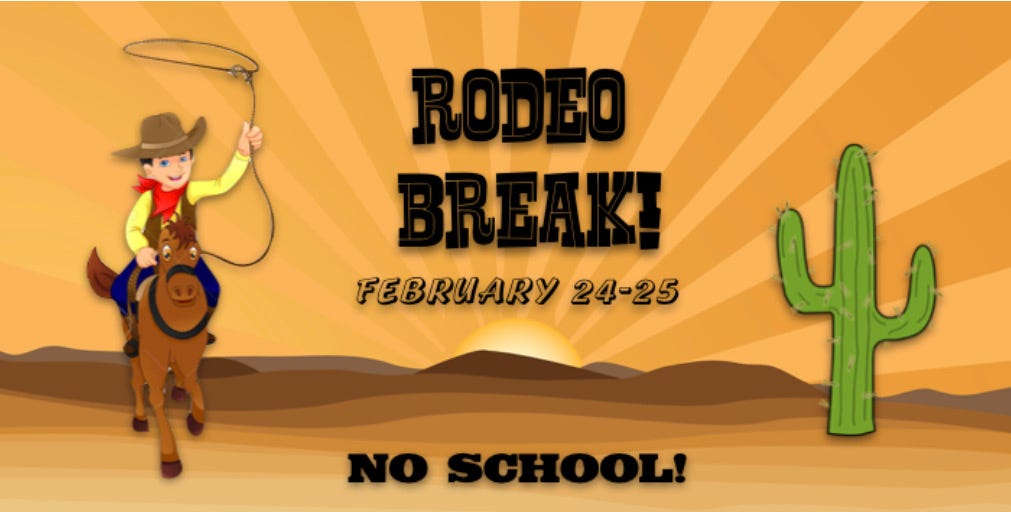



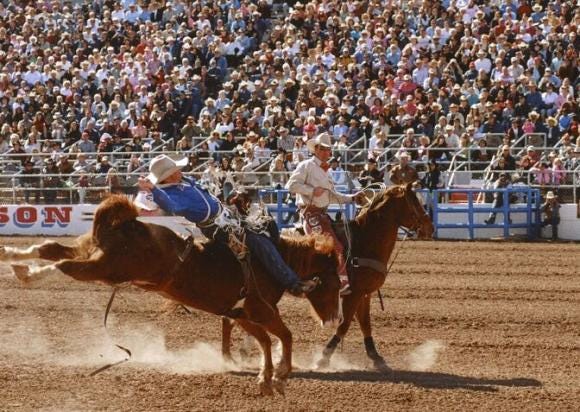
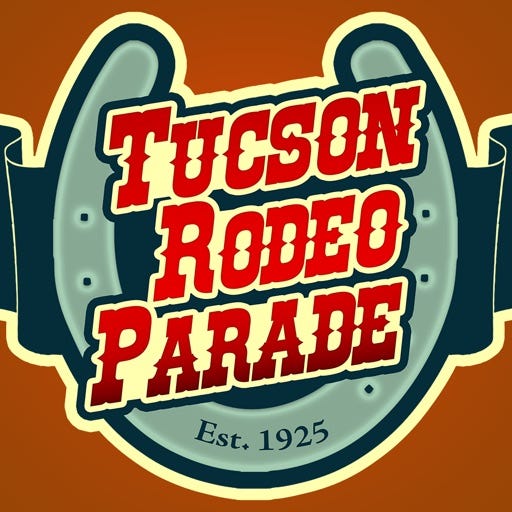
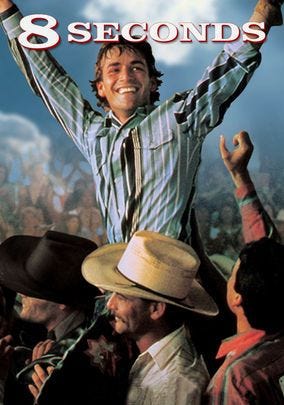
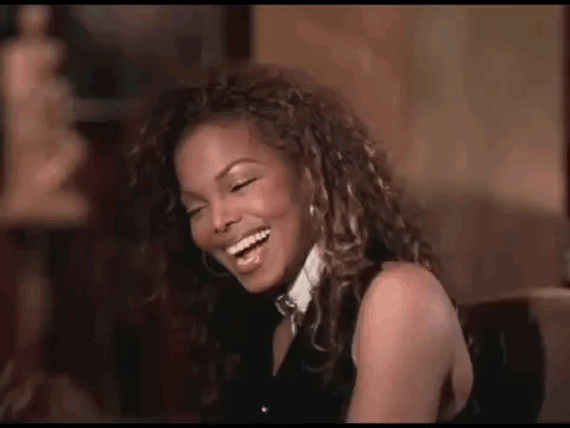





What a fascinating history! I love Alex's Rodeo Break newsletter, and was excited to see this post - and how cool would it be for someone to capture audio oral histories of this rich tradition. Thanks for this amazing post.
Beth! I am blown away! Thank you so much for history lesson in how "rodeo break" came to be! I have a deeper appreciation for this string of words and for you and your writing. (Also thank you for giving me my mood board for the weekend: La Fiesta de los Vaqueros!) Feeling so very honored by this <3